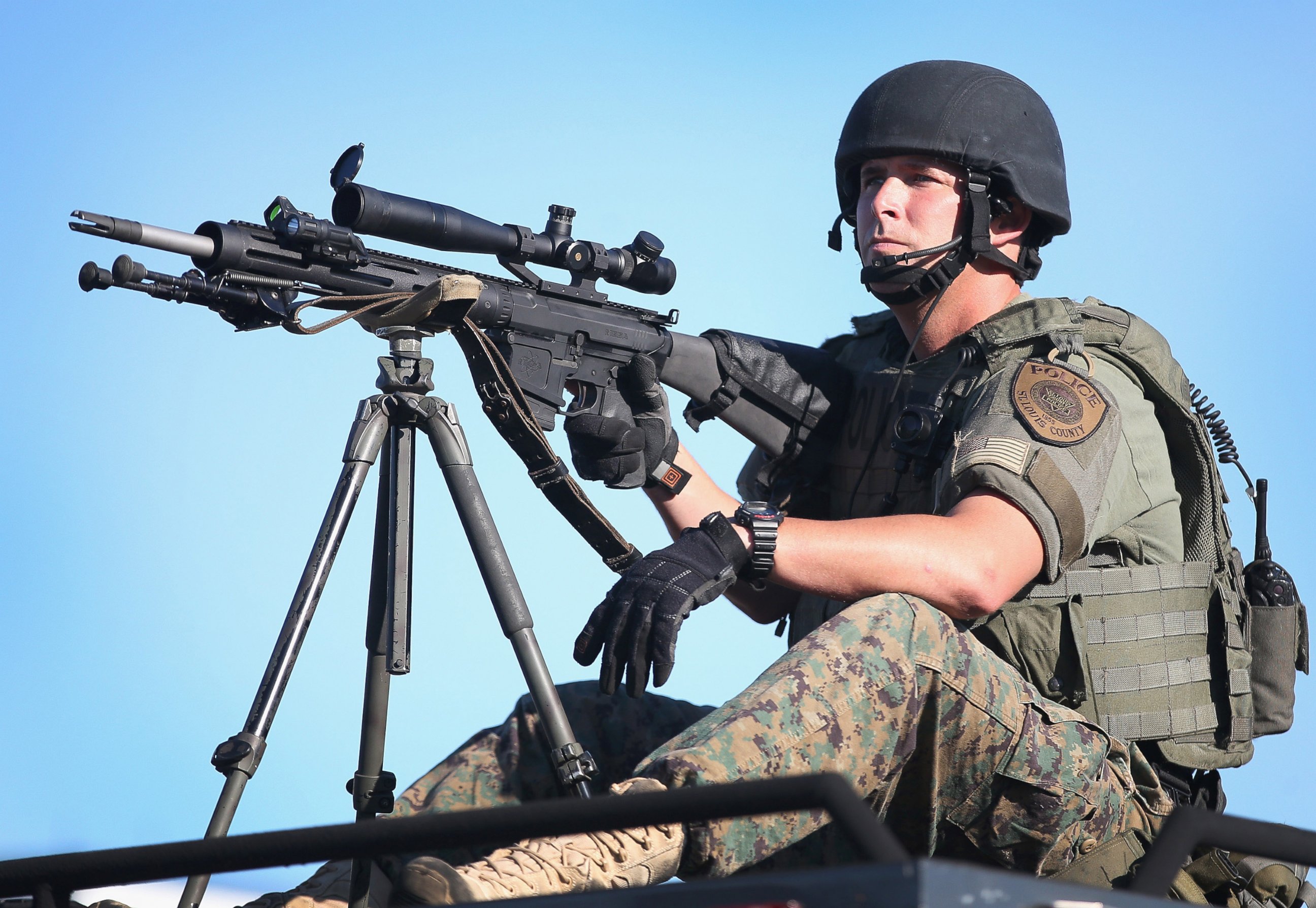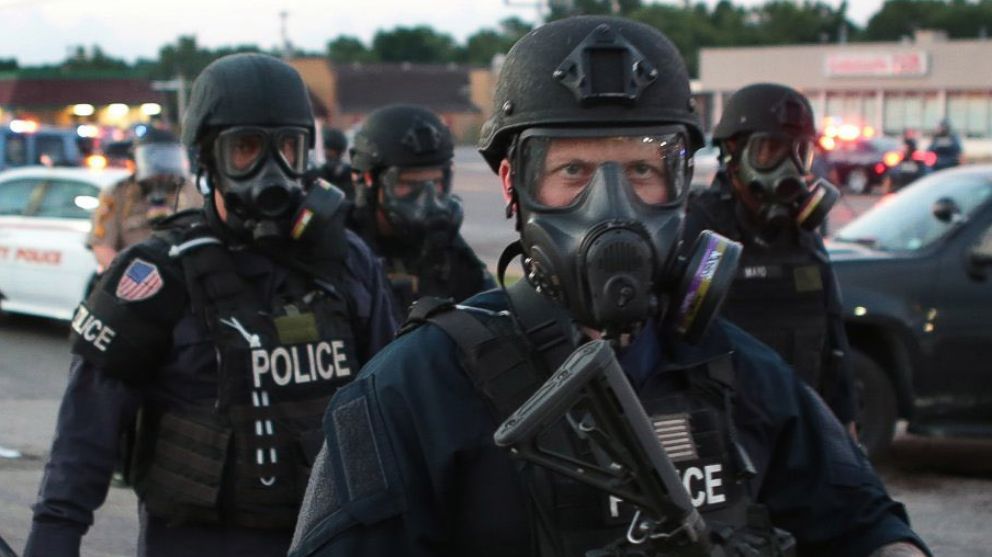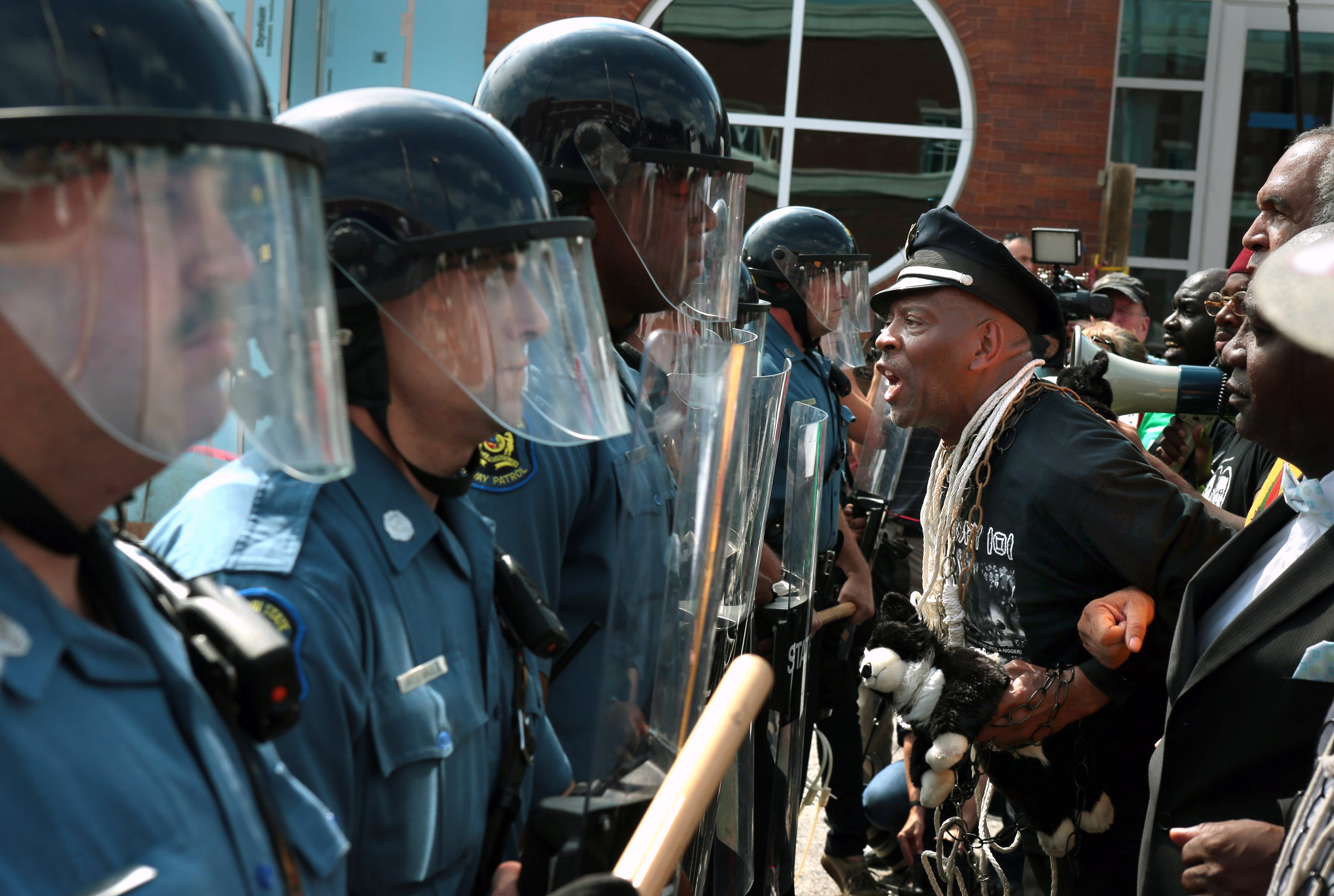Ferguson Police's Show of Force Highlights Militarization of America's Cops
— -- The latest images of unrest in Ferguson, Missouri, evoke scenes from a battlefield: heavily-armed officers in camouflage, carrying rifles in armored vehicles, firing at civilians.
In the case of Ferguson, police were firing rubber bullets, not real ones, along with tear gas and smoke bombs in an effort to tamp down protests and disperse demonstrators who had gathered for a fourth consecutive night Wednesday to demand justice for Michael Brown.
Violence in Ferguson: Police Fire Tear Gas, Smoke Bombs at Demonstrators
Michael Brown's Parents: 'Stop the Violence'
Brown, 18, was unarmed when he was shot multiple times by a police officer in broad daylight Saturday afternoon, authorities said. The officer has not been identified to the public and he has been placed on paid administrative leave, authorities said. Protesters have demanded he be identified and brought to justice.
The response of the Ferguson and St. Louis County police to the protests has highlighted a growing trend in policing in the United States: police SWAT teams look increasingly like military forces, using military-grade equipment and justifying that use by noting that the public has increasingly-sophisticated weapons themselves.
The distribution of military equipment to local law enforcement began in the 1990s to help agencies fight the so-called war on drugs. It was expanded after 9/11, with the creation of the Department of Homeland Security, to help law enforcement fight terror threats, experts said.

An official with the U.S. Department of Defense told ABC News today that last October, Ferguson police received "non-tactical" equipment under the so-called "1033 program" that included two unarmored Humvees, a trailer and a generator.
The armored vehicle used by Ferguson, and seen in many of the images from Wednesday night, was not given to the town by the DoD, the official said. It was not a military vehicle.

There’s no information yet about what other tactical equipment the Ferguson Police Department may have received, the official said, but a complete list of the equipment provided to St. Louis County by the DoD shows the types of weapons being distributed: six .45-caliber pistols, 12 rifles, two sight reflexes, one explosive ordnance disposal robot, one helicopter, seven utility trucks, three trailers, one motorized cart, one pair of elbow pads, one pair of knee pads, one industrial strength face shield, two night-vision viewers, and computers.
The weapons that Ferguson police are using appear to be non-military issue, the DoD official said, and their camouflage uniforms were likely commercially purchased.

But experts said police equipment and training around the nation have been getting military upgrades. And critics say this can be a problem.
"When you arm police like soldiers and outfit them with military weapons and train them on military tactics and tell them they’re fighting a war, whether it's a war on crime or drugs or looters and rioters, they’re going to start seeing themselves as soldiers, and seeing the people they serve less as citizens with rights and more as potential threats, and that’s what we’re seeing," said Radley Balko, author of the book "Rise of the Warrior Cop" and a reporter for the Washington Post.
Ferguson Police Chief Tom Jackson was asked at a press conference on Wednesday why his department was using military-grade equipment to tamp down unarmed protesters angry over the death of Michael Brown.
"None of that was military equipment, all of the SWAT teams have big vans and that was the city SWAT team and [St. Louis] County SWAT Team," he said. When pressed why his department was using armored vehicles and rifles, he countered, "People are using bombs now, pipe bombs and so forth."
Since 1990, the federal government has distributed surplus military weapons to town and county police forces under a program known as 1033, through the Law Enforcement Support Office. In 2013, LESO distributed $450 million worth of supplies, including automatic weapons to towns such as Ferguson and counties such as St. Louis, according to a report from the ACLU released this summer.
Other law enforcement personnel, including former Los Angeles Police Chief and current New York City Police Commissioner William Bratton, have defended the equipment as necessary for defending themselves from a more dangerous citizenry.
“I don’t see us as militarizing police,” Bratton told the Center for Investigative Reporting in 2011. “I see us as keeping abreast with society. And we are a gun-crazy society.”
Balko said that isn't necessarily true.
"There are more guns out there but there’s not much evidence that there’s a problem. The crime rate’s been dropping since 1994, and the Justice Department's done a couple of studies that show the type of gun typically used in a homicide, overwhelmingly, is low caliber handgun," Balko said. "The job of police officer has been getting safer as crime rate has been dropping."
"What’s happening in Ferguson is a reflection of militarization of policing happening across America," said Kara Dansky, senior counsel at the ACLU and the author of the report. "It's the routine use of paramilitary tactics, using weapons directly from the U.S. military, in towns across America."
"As we’re seeing in Ferguson, it tends to escalate the risk of violence, makes people less safe, and undermines the public's trust in law enforcement," Dansky said.
Pentagon Press Secretary Rear Admiral John Kirby was asked about criticism about the increased militarization of police forces in the U.S. at a news conference today.
"There is a law enforcement support program that the Defense Department administers which provides to law enforcement agencies around the country surplus military equipment, gear, arms, ammunition, vehicles," he said. "This is a useful program that allows for the reuse of military equipment that otherwise would be disposed of that can be used, again, by law enforcement agencies to serve their citizens."
"That said, it is up to law enforcement agencies to speak to how and what they gain through this system. And I'm not going to inject the Pentagon into this discussion. How this equipment is used to serve local citizens, again, is up for local law enforcement agencies to speak to," Kirby said.




